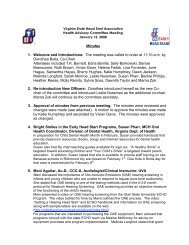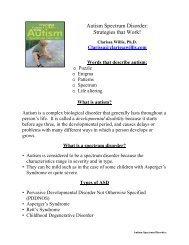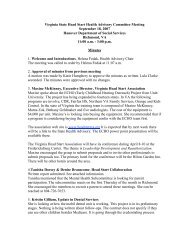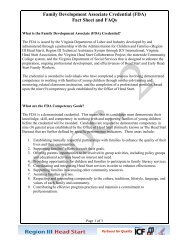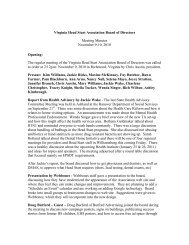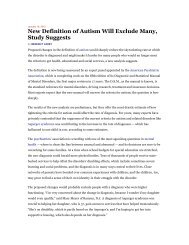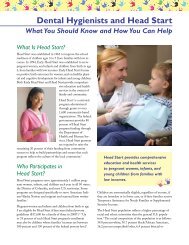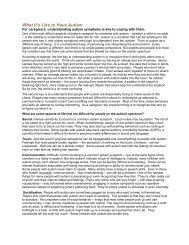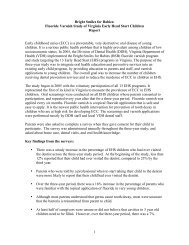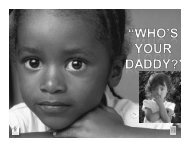RFD Classroom to Classroom Transition Procedures
RFD Classroom to Classroom Transition Procedures
RFD Classroom to Classroom Transition Procedures
Create successful ePaper yourself
Turn your PDF publications into a flip-book with our unique Google optimized e-Paper software.
Day 5: Arrange <strong>to</strong> have the child completely transitioned <strong>to</strong> the new classroom. At this time the<br />
current caregiver should move the child’s possessions <strong>to</strong> the receiving classroom as well as<br />
notify transportation staff, if applicable, of transition. It is recommended that very young children<br />
be placed in a room that they can stay in for the season because of their need <strong>to</strong> have a<br />
consistent, primary caregiver in order for them <strong>to</strong> bond and develop trust and security.<br />
However, there are times when it is necessary <strong>to</strong> transition a child under the age of two <strong>to</strong><br />
another room. In these cases, it is suggested that several visits of 15-30 minutes per day be<br />
scheduled with the primary caregiver one week prior <strong>to</strong> transition and 30-45 minutes visits be<br />
scheduled the week of the transition, with the primary caregiver gradually weaning out of the<br />
child’s time in the receiving room. Special considerations need <strong>to</strong> be made when transitioning<br />
children birth <strong>to</strong> 24 months of age as well as children with special needs.<br />
As stated previously, it is recommended that very young children be placed in a room where<br />
they can stay in for the season because of their need <strong>to</strong> have a consistent, primary caregiver in<br />
order for them <strong>to</strong> bond and develop trust and security. Because relationship building is so<br />
important in caring for young children, unnecessary transitions should be avoided. Planning for<br />
very young children <strong>to</strong> stay in one room for the season allows for continuity of care minimizing<br />
transitions from classroom <strong>to</strong> classroom allowing children and their primary caregivers <strong>to</strong> build<br />
that relationship. Infants and <strong>to</strong>ddlers coming in<strong>to</strong> the center should be able <strong>to</strong> stay with their<br />
primary caregivers for as long as possible before transitioning in<strong>to</strong> another classroom.<br />
Following <strong>Transition</strong> Week<br />
The bond formed between children and the primary caregivers from their first room needs <strong>to</strong> be<br />
respected. This bond is not <strong>to</strong> be severed simply because children are moved <strong>to</strong> a new room.<br />
To preserve the connection, there should be ongoing opportunities for children <strong>to</strong> maintain<br />
contact through warm greetings and brief visits from the primary caregiver <strong>to</strong> children’s new<br />
room.<br />
Child <strong>Classroom</strong> <strong>Transition</strong> Form<br />
Purpose<br />
• To ensure that classroom <strong>to</strong> classroom transitions occur in a timely, predictable and<br />
unrushed manner according <strong>to</strong> the child’s developmental needs.<br />
• To ensure parents and relevant staff participate in easing the child’s transition <strong>to</strong> another<br />
classroom.<br />
Instructions<br />
When a child is developmentally ready <strong>to</strong> be transitioned <strong>to</strong> another classroom, this form<br />
provides the appropriate steps <strong>to</strong> follow for the child’s emotional stability during the transition<br />
process.<br />
• Discuss the process with parents. Upon their approval, fill in the form and plan for the<br />
transition.<br />
• Parents and relevant staff need <strong>to</strong> sign as active participants in the process.<br />
• Date each item as the process is followed.<br />
The form is filed in the child’s folder once the process is completed.<br />



